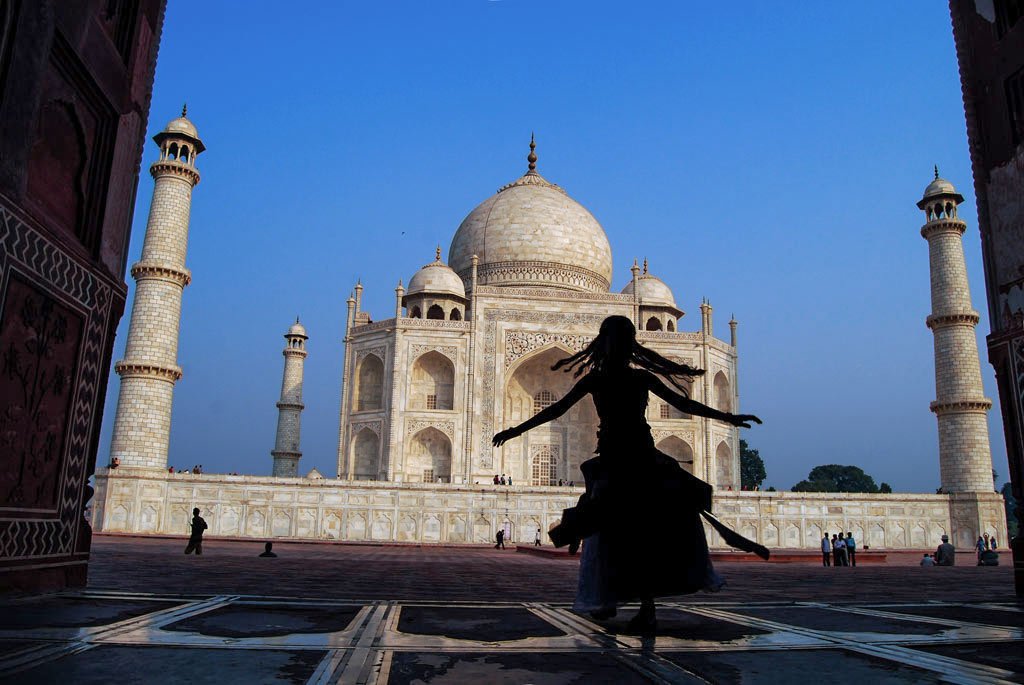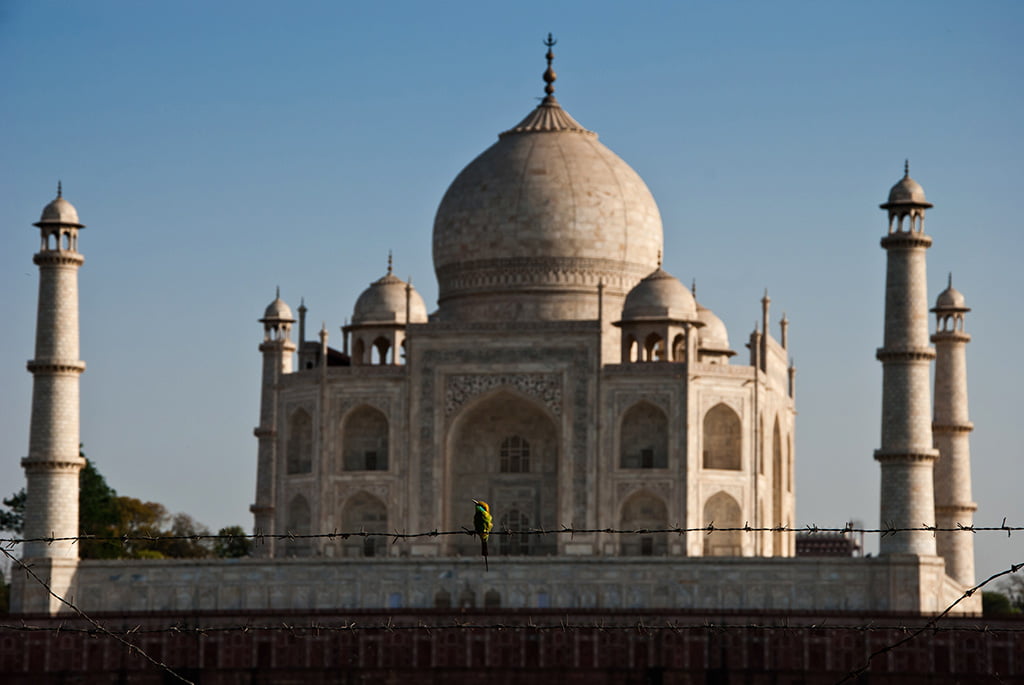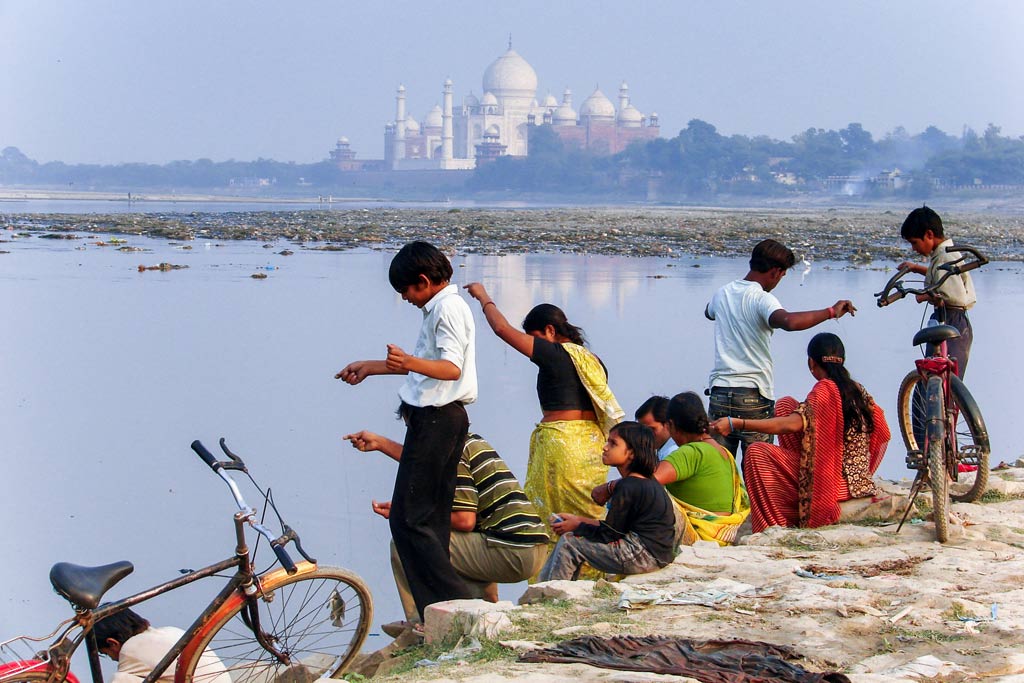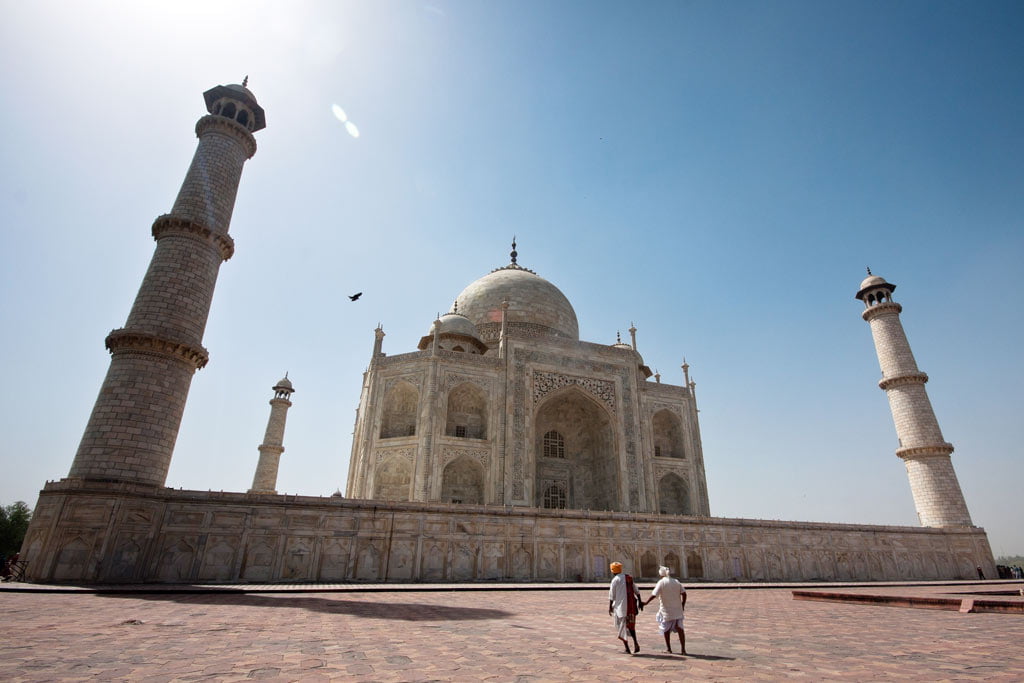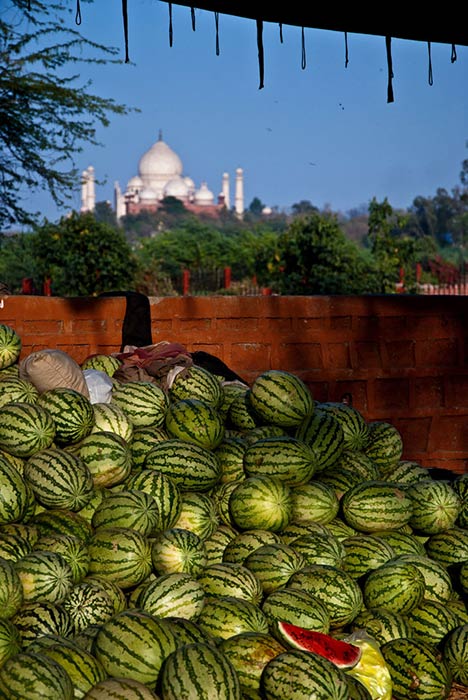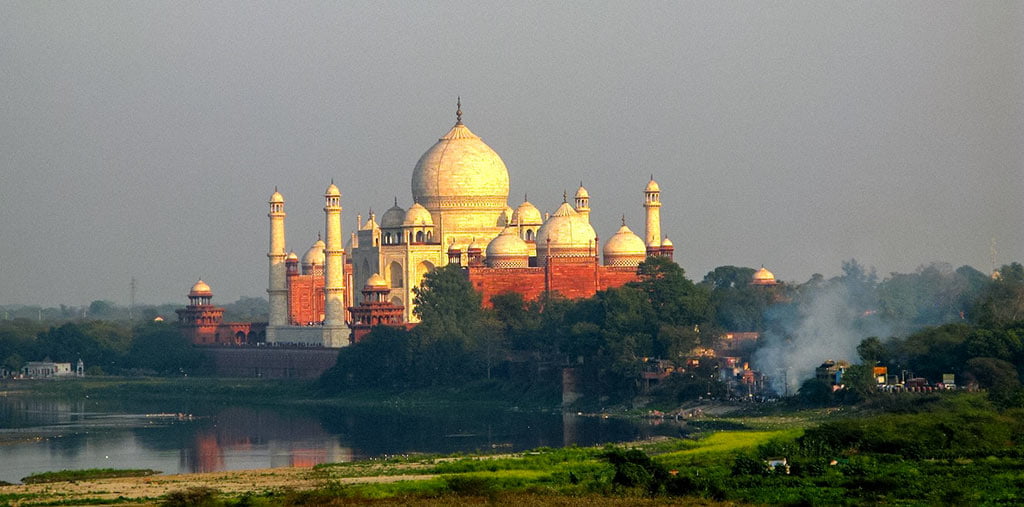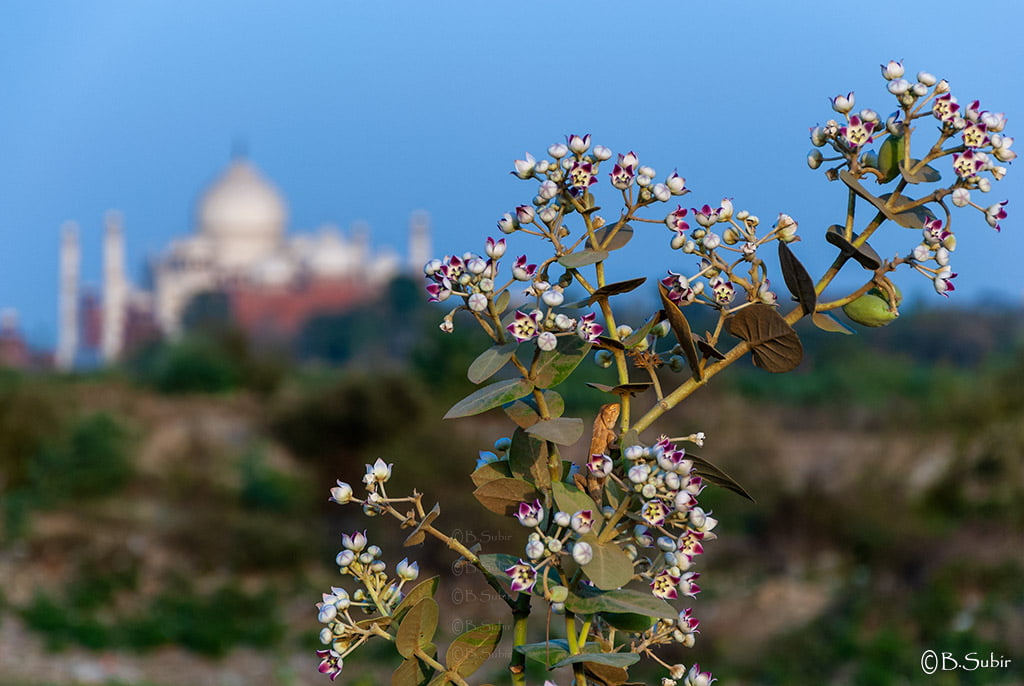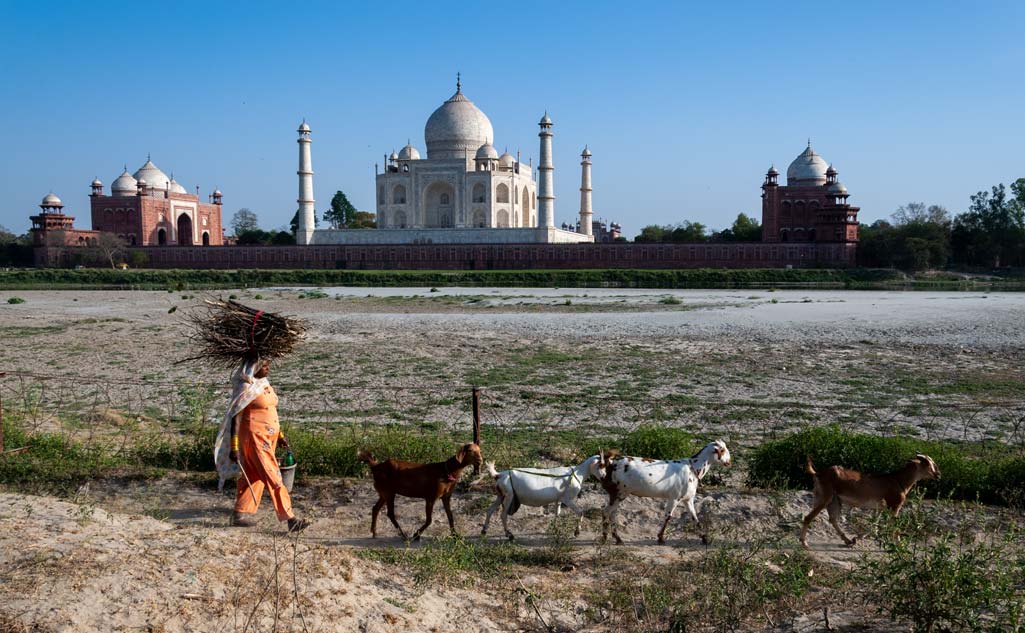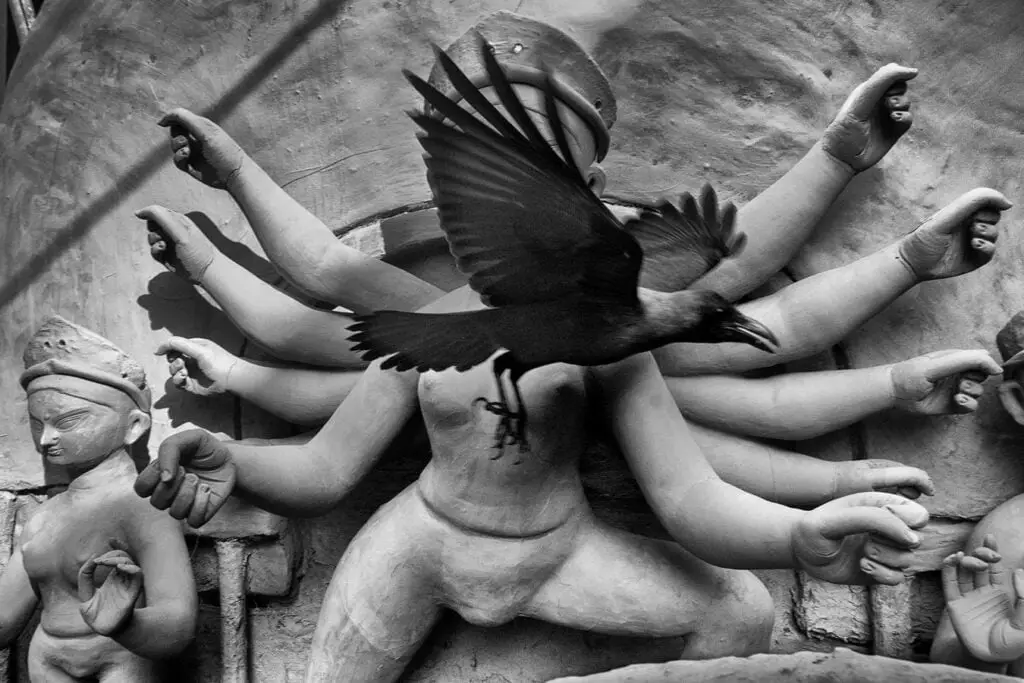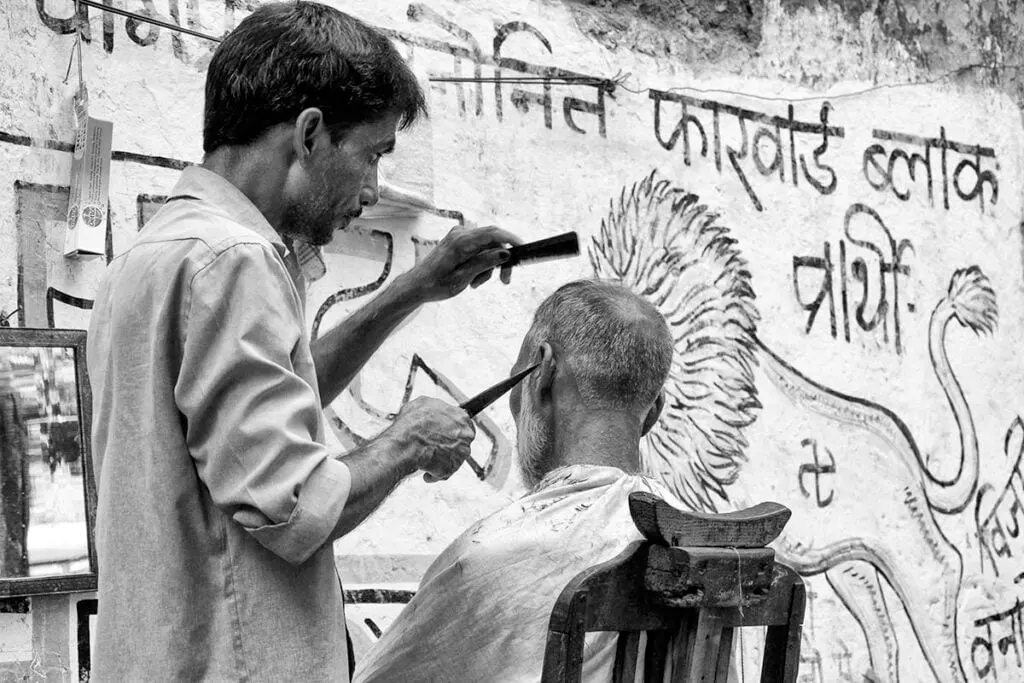The Taj Mahal is an awe-inspiring monument that embodies the beauty of love and the power of human emotion. As one of the world’s most iconic structures, it’s a popular destination for photographers seeking to capture its breathtaking beauty. In this blog post, we’ll provide valuable tips and guidelines for photographing the Taj Mahal while also being mindful of its cultural significance. Whether you’re a seasoned pro or a beginner, these photography tips for the Taj Mahal will help you capture stunning images that are sure to wow your audience. So, if you’re looking to enhance your Taj Mahal photography skills, read on!
Did You Know?
Did you know that the four minarets of the Taj Mahal are not only decorative but also serve a crucial function? These minarets were intentionally built tilted outwards to protect the main structure in case of an earthquake, which is not uncommon in the region. Moreover, each minaret’s pinnacle leans towards the main tomb to minimize damage in case of a collapse. This ingenious engineering feat showcases the level of thought and planning that went into the construction of the Taj Mahal. It is a testament to the skills of the builders who created this masterpiece, and it remains one of the world’s most remarkable examples of architecture and design.
About Taj Mahal
The Taj Mahal is one of the most iconic monuments in the world, and a symbol of India’s rich cultural heritage. It is a stunning white marble mausoleum located in Agra, India, and was commissioned by Mughal emperor Shah Jahan in 1632. The Taj Mahal is famous for its intricate architecture and breathtaking beauty, making it one of the most visited tourist destinations in the world. Its unique blend of Islamic and Hindu architecture makes it a captivating sight for visitors from all over the globe. Aside from its aesthetic appeal, it also holds deep religious significance for many people around the world.
White marble brought from Rajasthan’s Makrana region. The interior decor is adorned with semi-precious stones sourced from various parts ofIndia, Afghanistan, and Ceylon. The monument is situated in the center of a picturesque Mughal garden, and a striking reflection of the tomb can be observed in the raised marble water tank at the garden’s heart. The mausoleum’s splendor is further enhanced by the display of varying hues of colors – it appears pinkish in the early morning, milky white in the evening, and golden during moonlit nights.
Mumtaz Mahal: The Inspiration Behind the Taj Mahal
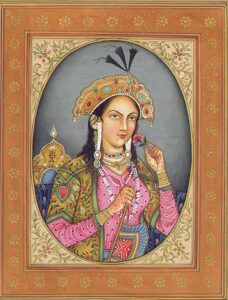
Mumtaz Mahal was born as “Arjumand Banu”(1593-1631).She was the beloved wife of Mughal Emperor Shah Jahan and the inspiration behind the construction of the Taj Mahal. Her life and legacy continue to be celebrated today, centuries after her death.
Shah Jahan was said to be deeply in love with Mumtaz Mahal, and he was devastated by her untimely death during the birth of their 14th child. To honor her memory, he commissioned the construction of the Taj Mahal, a magnificent mausoleum that would be one of the greatest architectural feats of the Mughal era.
The Taj Mahal is a symbol of love and devotion, and it stands as a testament to the power of Shah Jahan’s love for Mumtaz Mahal. Its design and construction took over 20 years to complete, and it involved thousands of skilled workers and artisans who created the intricate marble carvings and inlays that adorn the monument.
Architecture and Design of the Taj Mahal

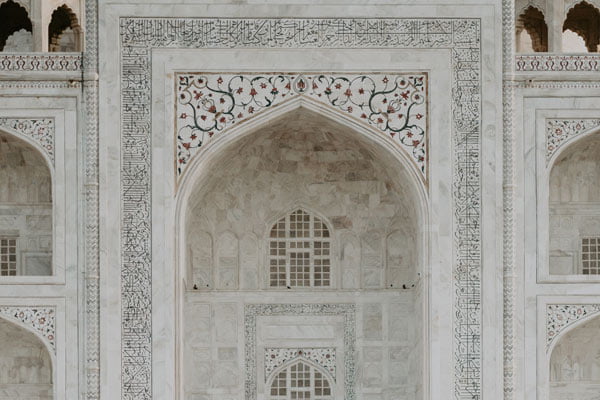
The Taj Mahal is a stunning building that showcases the skill and artistry of the Mughal era. It’s made of white marble that was sourced from Rajasthan and then transported to Agra for construction. The marble was then carved into intricate patterns like arabesques, calligraphy, and floral motifs, and inlaid with semi-precious stones like lapis lazuli, carnelian, and jade.
The Taj Mahal is surrounded by a large garden divided into four parts by water channels, reflecting the Islamic idea of paradise where water and greenery symbolize life and renewal. The garden layout adds to the beauty of the monument, making it a remarkable tribute to love and beauty.
One fascinating aspect of the Taj Mahal’s design is its optical illusions that make the monument appear to change color throughout the day. The marble reflects different hues of light at different times of day, creating a pinkish glow in the morning, a milky white in the afternoon, and a golden sheen at sunset.
Overall, the Taj Mahal is an incredible example of Mughal architecture and design that continues to inspire visitors from all over the world with its grandeur and beauty.
Taj Mahal:UNESCO World Heritage Site
In 1983, the Taj Mahal was officially designated as a UNESCO World Heritage Site, recognizing its cultural significance and exceptional universal value. This acknowledgement pays tribute to the Taj Mahal’s significance as a masterpiece of Mughal architecture, combining Indian, Islamic, and Persian design elements.
Furthermore, it is widely regarded as one of the most remarkable architectural achievements in the world and has captivated people’s imagination for centuries. Its inclusion on the prestigious list of Seven Wonders of the World attests to its importance and enduring appeal.
Is black Taj Mahal a myth?
The Taj Mahal, one of the world’s most famous monuments, is shrouded in many fascinating stories and facts that are lesser-known. One of the most intriguing myths about the Taj Mahal is the tale of the “Black Taj Mahal.” Legend has it that Mughal emperor Shah Jahan intended to build a black marble mausoleum for himself across the Yamuna River from the iconic Taj Mahal, but was unable to complete it before his death. However, there is no concrete evidence to support this story, and many historians consider it to be nothing more than a myth.
The idea of a Black Taj Mahal has fascinated travelers and historians for centuries, and it was first introduced by the French traveler Jean Baptiste Tavernier, who visited Agra in 1665 and wrote about the rumored structure. Although the story of the Black Taj Mahal continues to capture the imagination of people around the world, many modern experts believe it to be a myth.
Despite the lack of evidence, the Black Taj Mahal remains a popular legend associated with the Taj Mahal. Some historians suggest that Shah Jahan may have intended to build a mausoleum for himself in black marble next to the Taj Mahal, but there is no proof that any significant construction took place. The story of the Black Taj Mahal continues to captivate people’s imaginations, but its historical accuracy remains in doubt.
Taj Mahal: photography tips
The Taj Mahal is an awe-inspiring monument that embodies the beauty of love and the power of human emotion. As one of the world’s most iconic structures, it’s a popular destination for photographers seeking to capture its breathtaking beauty. In this blog post, we’ll provide valuable tips and guidelines for photographing the Taj Mahal while also being mindful of its cultural significance. Whether you’re a seasoned pro or a beginner, these photography tips for the Taj Mahal will help you capture stunning images that are sure to wow your audience. So, if you’re looking to enhance your Taj Mahal photography skills, read on!
Plan Your Visit
If you want to get the best possible shots of the Taj Mahal, you need to plan your visit carefully. The best time to visit the Taj Mahal is early in the morning, just after sunrise, or late in the afternoon, just before sunset. The light at these times of day is soft and warm, which is perfect for capturing the beauty of the Taj Mahal. Avoid visiting during the middle of the day when the light is harsh and can create harsh shadows.
As for the season, the best time to visit the Taj Mahal is during the winter months, from October to March. During this time, the weather is mild, and the sky is usually clear, making it ideal for photography. However, keep in mind that the Taj Mahal can get crowded during peak season, so it’s important to plan your visit accordingly.
Carry a Wide Angle Lens
The Taj Mahal is a massive structure, and to capture its full beauty, you need to use a wide-angle lens along with extended normal lens. A wide-angle lens will allow you to capture the entire structure in one shot. If you don’t have a wide-angle lens, try using a panorama feature on your camera or phone to capture multiple shots and stitch them together.
Shoot from Different Angles
The Taj Mahal is a popular tourist attraction, and it can get crowded quickly. To avoid capturing the same shots as everyone else, try shooting from different angles. Walk around the Taj Mahal and try to find unique vantage points. Shoot from low angles to capture the reflection of the Taj Mahal in the water or from high angles to get a bird’s eye view of the structure.
Include Elements
It’s not just a structure; it’s also a place of culture and people. Including different elements in your shots can give your photos a sense of place and show the life around the Taj Mahal. Try to capture locals or tourists interacting with the Taj Mahal or taking photos of themselves.
Be Respectful
It is a place of great cultural significance, and it’s essential to be respectful when taking photos. Be mindful of the people around you, and don’t disrupt their experience. Avoid using flash photography, as it can be distracting and disrespectful. Also, be aware of your surroundings and follow any rules or regulations in place.
Best Taj Mahal Viewpoint Locations in Agra
- From a hot air balloon
- The Oberoi Amarvilas hotel:This luxury hotel is located near the Taj Mahal and offers stunning views of the monument from many of its rooms and public areas.
- Agra Fort
- Hathi Ghat
- Mehtab Bagh
- Dusshera Ghat
- Rooftop cafe or restaurant:There are numerous cafes and restaurants in Agra that offer views of the Taj Mahal from their rooftop seating areas. It’s an excellent way to enjoy a meal or drink while taking in the view.
- Chhatris by the Yamuna River- This viewing point is near Mehtab Bagh and provides a secluded location to watch the sunset over the Taj Mahal.
- From a boat on the Yamuna River
Do's & Don'ts
Discover the timeless beauty of the Taj Mahal while respecting its historical and cultural significance. To ensure a memorable and responsible visit, please follow these guidelines:
Do's:
- Contribute to the preservation of the monument by using dustbins and keeping it clean
- Enhance your experience by hiring approved guides and photographers with valid identification
- Explore the Taj Museum inside the complex, which opens from 10.00 AM to 5.00 PM.
- Minimize pollution by using the designated parking areas and battery buses/golf carts to reach the monument
- Join hands to keep the monument clean and beautiful for generations to come
Don'ts:
- Don’t bring drone cameras, as they are strictly prohibited inside and around the Taj Mahal
- Respect the sanctity of the monument by refraining from eating, smoking, or carrying prohibited items such as weapons, tobacco products, and electronic goods (except cameras) inside the monument
- Turn off your mobile phone or put it on silent mode to maintain the serene atmosphere
- Avoid carrying big bags or books, which may increase security check time
- Photography inside the main mausoleum is not permitted to safeguard its intricate beauty
- Treat the monument with care by refraining from touching or scratching the walls and surfaces
- Maintain a peaceful environment by not making noise inside the mausoleum
- Prohibited items and mobile phones are not allowed for night viewing of the Taj Mahal, except for still cameras after a security check.
FAQ
1.Who built the Taj Mahal and why?
The Taj Mahal, an enchanting mausoleum, was erected by the Mughal Emperor Shah Jahan as a tribute to his cherished wife, Mumtaz Mahal, who passed away in 1631. Among all his wives, she was Shah Jahan’s most beloved, and her untimely demise left him heartbroken. As a mark of his enduring love, Shah Jahan embarked on the construction of the Taj Mahal, a colossal undertaking that spanned more than two decades and was finally completed in 1653. The Taj Mahal is a testament to the Emperor’s passion and a perpetual symbol of his affection for his wife.
2.What is inside the Taj Mahal?
The Taj Mahal, a stunning mausoleum crafted from exquisite white marble, enshrines the tomb of Mumtaz Mahal, the adored wife of Mughal Emperor Shah Jahan. In addition to Mumtaz Mahal’s final resting place, the structure also houses the Emperor’s own tomb and smaller tombs of other members of the imperial family. The interior of the Taj Mahal features breathtaking intricate carvings and inlaid works of precious and semi-precious stones, sourced from distant lands like jasper, jade, crystal, turquoise, and lapis lazuli.
3.Entry fee for the Taj Mahal?(as on March 2023)
- The entrance fee to the site is as follows: Rs 50/- for Domestic/Indian/OCI cardholders.
- Rs 540/- for Citizens of SAARC and BIMSTEC Countries.
- Rs 1100/- for Foreign Tourists.
- Children under the age of 15 are exempt from the entry fee.
- For those who wish to visit the main mausoleum, there is an additional charge of Rs 200/-.
- Online bookings will receive a discount of Rs 5/- for Indians and Rs 50/- for foreigners.
4.What is the best time to visit Taj Mahal?
The ideal time to plan a visit to the Taj Mahal is during the pleasant winter months from October to March, when the weather is cooler, and visitors can explore the monument and surrounding areas without feeling too hot or uncomfortable. During this time, the mornings and evenings are particularly pleasant, and the daytime temperatures are comfortable enough for outdoor activities.
Furthermore, the clear skies during this period offer better visibility and allow visitors to enjoy the beauty of the monument and its surroundings without any obstruction. However, it’s essential to keep in mind that the Taj Mahal is closed on Fridays, so visitors should plan their trip accordingly.
It’s also crucial to be aware of any special events or festivals taking place in Agra or its surrounding areas as they may affect the crowds and availability of accommodations. By keeping these factors in mind, visitors can make the most of their trip to the Taj Mahal and ensure a memorable experience.
5.Which days Taj Mahal is closed?
Taj Mahal is closed on Fridays for general viewing. Other days it is always open.
5.Ticket Outlets for Taj Mahal?
There are two primary ticket outlets located near the monument’s eastern and western gates. The eastern gate ticket counter is located near the gate itself and is open from one hour before sunrise until 45 minutes before sunset. Similarly, the western gate ticket counter is situated near Saheli Burj and is also open during the same hours.
It’s important to note that during peak tourist season, these ticket outlets can get quite crowded, resulting in long wait times. As a result, visitors are advised to purchase tickets in advance or opt for guided tours that include priority entry to the monument.
Additionally, visitors should ensure they have a valid photo ID with them when purchasing tickets, and should be aware that separate ticket prices exist for Indian and foreign visitors. Finally, it’s worth considering a combined ticket that includes entry to other ASI monuments in Agra, or purchasing tickets online through the Archaeological Survey of India (ASI) website or authorized travel agents.

